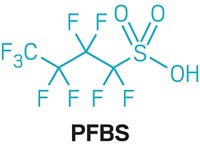Advertisement
Grab your lab coat. Let's get started
Welcome!
Welcome!
Create an account below to get 6 C&EN articles per month, receive newsletters and more - all free.
It seems this is your first time logging in online. Please enter the following information to continue.
As an ACS member you automatically get access to this site. All we need is few more details to create your reading experience.
Not you? Sign in with a different account.
Not you? Sign in with a different account.
ERROR 1
ERROR 1
ERROR 2
ERROR 2
ERROR 2
ERROR 2
ERROR 2
Password and Confirm password must match.
If you have an ACS member number, please enter it here so we can link this account to your membership. (optional)
ERROR 2
ACS values your privacy. By submitting your information, you are gaining access to C&EN and subscribing to our weekly newsletter. We use the information you provide to make your reading experience better, and we will never sell your data to third party members.
Persistent Pollutants
US EPA broadens its definition of PFAS
Agency groups these compounds on list for possible regulation in drinking water
by Cheryl Hogue
November 4, 2022

The US Environmental Protection Agency is expanding its definition of per- and polyfluoroalkyl substances (PFAS)—at least for flagging contaminants for possible regulation in drinking water.
In the past, the agency used a limited definition of PFAS: “Chemicals with at least two adjacent carbon atoms, where one carbon is fully fluorinated and the other is at least partially fluorinated.”An EPA Safe Drinking Water Act decision unveiled Nov. 2 broadens this definition to include fluorocarbons with highly branched carbon chains and some fluoroethers.
The decision adds PFAS as a group to the agency’s list of substances that are candidates for regulation in drinking water. This means commerical PFAS, their byproducts, and their environmental transformation products will come under EPA scrutiny if they are detected in drinking water and meet the new definition. The agency previously listed only individual PFAS as candidates for such regulation.
This change is “an important first step towards identifying additional PFAS that may require regulation under the Safe Drinking Water Act,” the agency says in a statement. Listing the chemicals as a group on the candidates list doesn’t necessarily mean the agency will regulate PFAS as a category under the Safe Drinking Water Act, the decision says.
PFAS are synthetic chemicals widely used for water and stain resistance, fighting fires, and their ability to withstand harsh conditions. They are nicknamed “forever chemicals” because they resist breakdown. Some are known to be toxic, but most have not been tested extensively, if at all.
The agency’s new three-part definition is more limited than one crafted by an international panel of scientists convened by the Organisation for Economic Co-operation and Development (OECD), which is a coalition of 38 of the world’s highest-income countries, and the United Nations Environment Programme. Called the OECD definition, it includes any chemical with a perfluorinated methyl group or a perfluorinated methylene group, with few exceptions.
The EPA can add new contaminants to its list of candidates for drinking water regulation every 5 years. After listing, the agency requires large public drinking-water utilities to monitor for the contaminants and conducts or funds similar monitoring at some smaller water systems. After analyzing the resulting monitoring data, the agency must study at least five contaminants on the list and decide whether to regulate any of them. This process generally takes years.




Join the conversation
Contact the reporter
Submit a Letter to the Editor for publication
Engage with us on Twitter